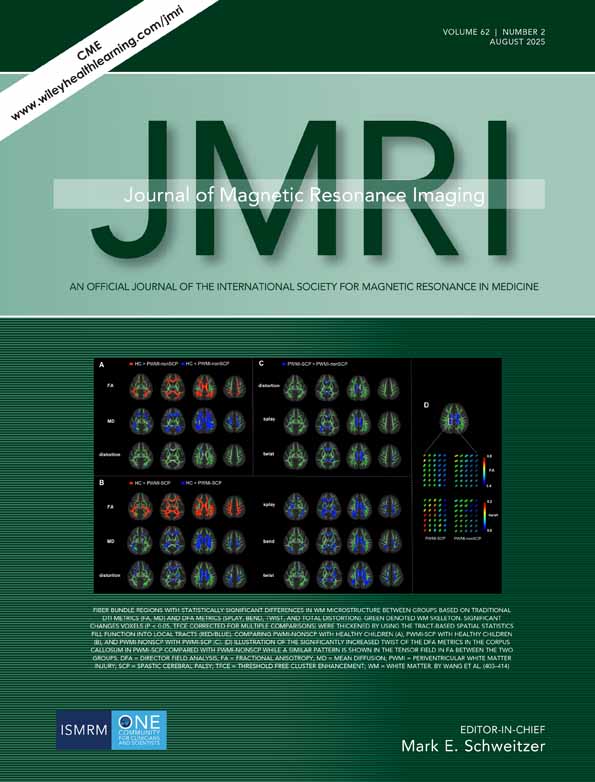Diagnosis of Sacroiliitis Through Semi-Supervised Segmentation and Radiomics Feature Analysis of MRI Images
Abstract
Background
Sacroiliitis is a hallmark of ankylosing spondylitis (AS), and early detection plays an important role in managing the condition effectively. MRI is commonly used for diagnosing sacroiliitis, traditional methods often depend on subjective interpretation or limited automation which can introduce variability in diagnoses. The integration of semi-supervised segmentation and radiomics features may reduce reliance on expert interpretation and the need for large annotated datasets, potentially enhancing diagnostic workflows.
Purpose
To develop a diagnostic model for sacroiliitis and bone marrow edema (BME) using semi-supervised segmentation and radiomics analysis of MRI images.
Study Type
Retrospective cohort study.
Population
A total of 257 patients (161 males, 93 females; age 11–74 years), including 155 sacroiliitis and 175 BME patients. A total of 514 sacroiliac joint (SIJ) MRI images are analyzed, with 359 used for training and 155 for testing.
Field Strength/Sequence
3.0 T, spin echo T1-weighted imaging (T1WI) and short-tau inversion recovery (STIR).
Assessment
SIJ segmentation is automated using the semi-supervised segmentation-based Unimatch framework. Manual delineation of SIJ regions of interest (ROIs) on T1WI images by an experienced radiologist (W.M., 10-year experience) served as the reference standard for segmentation performance evaluation. Radiomics features from T1WI and STIR are used to train machine learning models, including support vector machine (SVM), logistic regression (LR), and light gradient boosting machine (LightGBM), for sacroiliitis and BME detection. Performance is assessed using area under the curve (AUC), sensitivity, specificity, and accuracy. The Dice coefficient is used to assess the performance of the semi-supervised segmentation model on SIJ segmentation.
Statistical Tests
Performance is evaluated using receiver operating characteristic (ROC) curves and decision curve analysis (DCA).
Result
The Unimatch model achieves an average Dice coefficient of 0.859 for SIJ segmentation. AUCs for sacroiliitis detection are 0.84 (LR), 0.86 (SVM), and 0.78 (LightGBM), while for BME detection, AUCs are 0.73 (LR), 0.76 (SVM), and 0.70 (LightGBM).
Data Conclusion
This study demonstrates that semi-supervised segmentation combined with radiomics features and machine learning models provides a promising approach for diagnosis of sacroiliitis and BME.
Plain Language Summary
This study aimed to improve the diagnosis of sacroiliitis and bone marrow edema in patients with ankylosing spondylitis. The researchers used a method that automatically segments MRI images and analyzes features from those images. By applying machine learning, they created models to help detect sacroiliitis and bone marrow edema more accurately. The results show that this approach can effectively assist in identifying these conditions, with the best accuracy for sacroiliitis and bone marrow edema reaching 81.2% and 74.2%, respectively. This method could help doctors make better decisions, offering a promising tool for improving diagnosis in clinical settings.
Level of Evidence
3
Technical Efficacy
Stage 2




